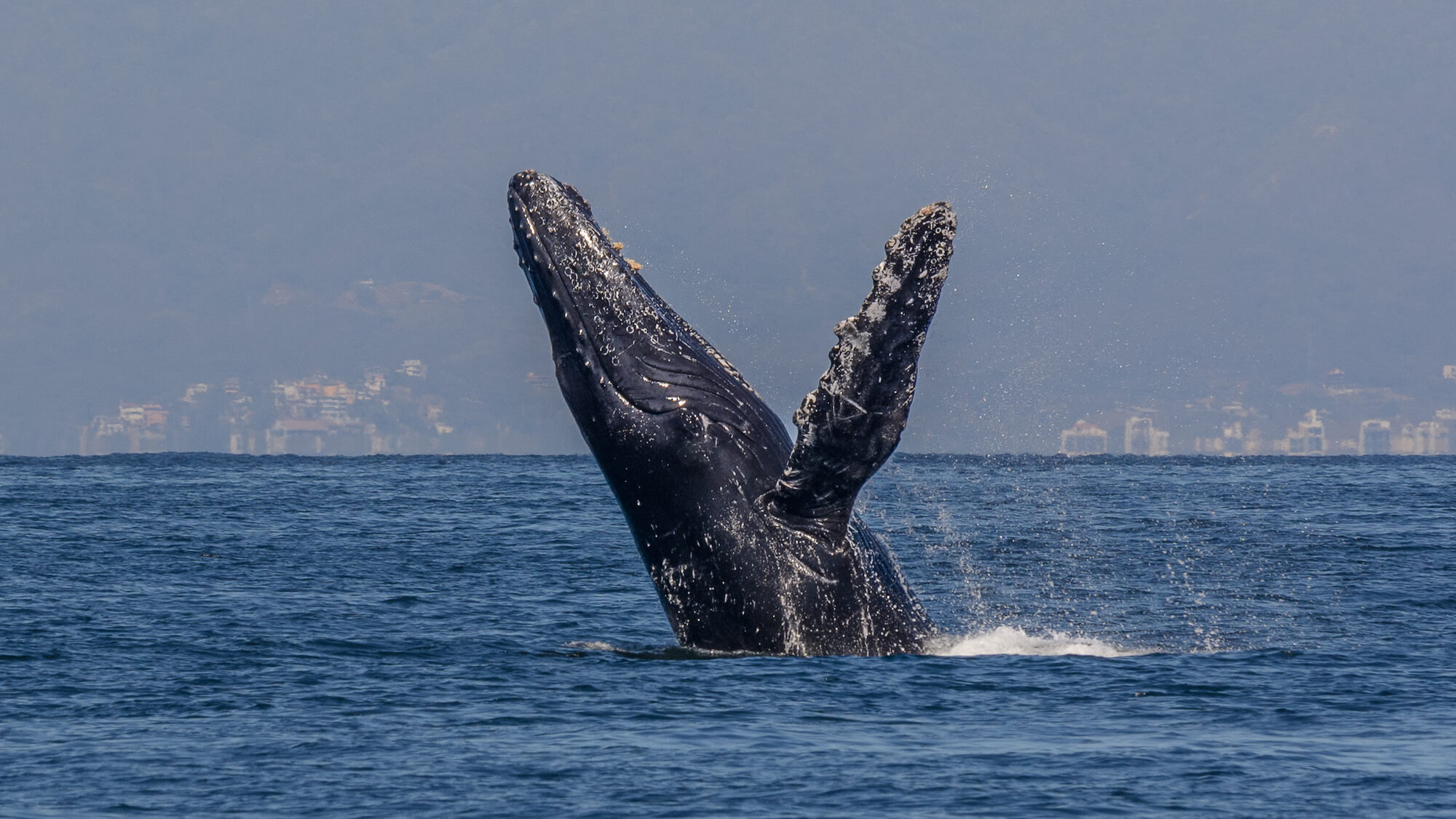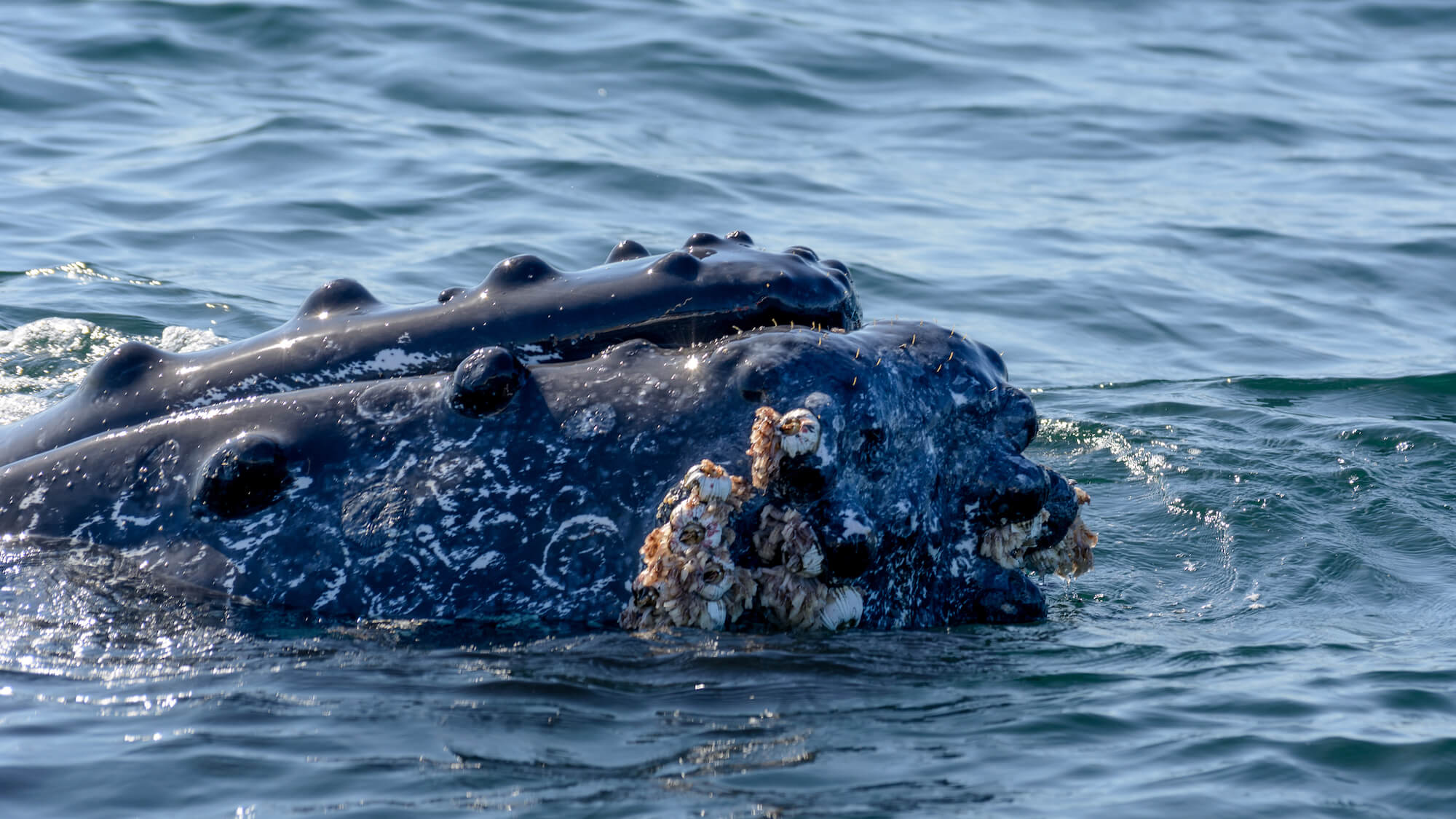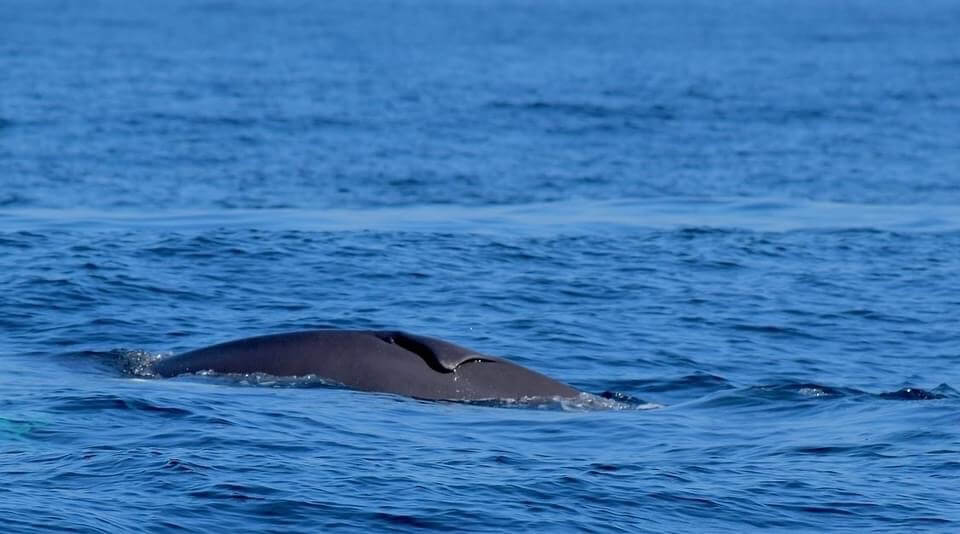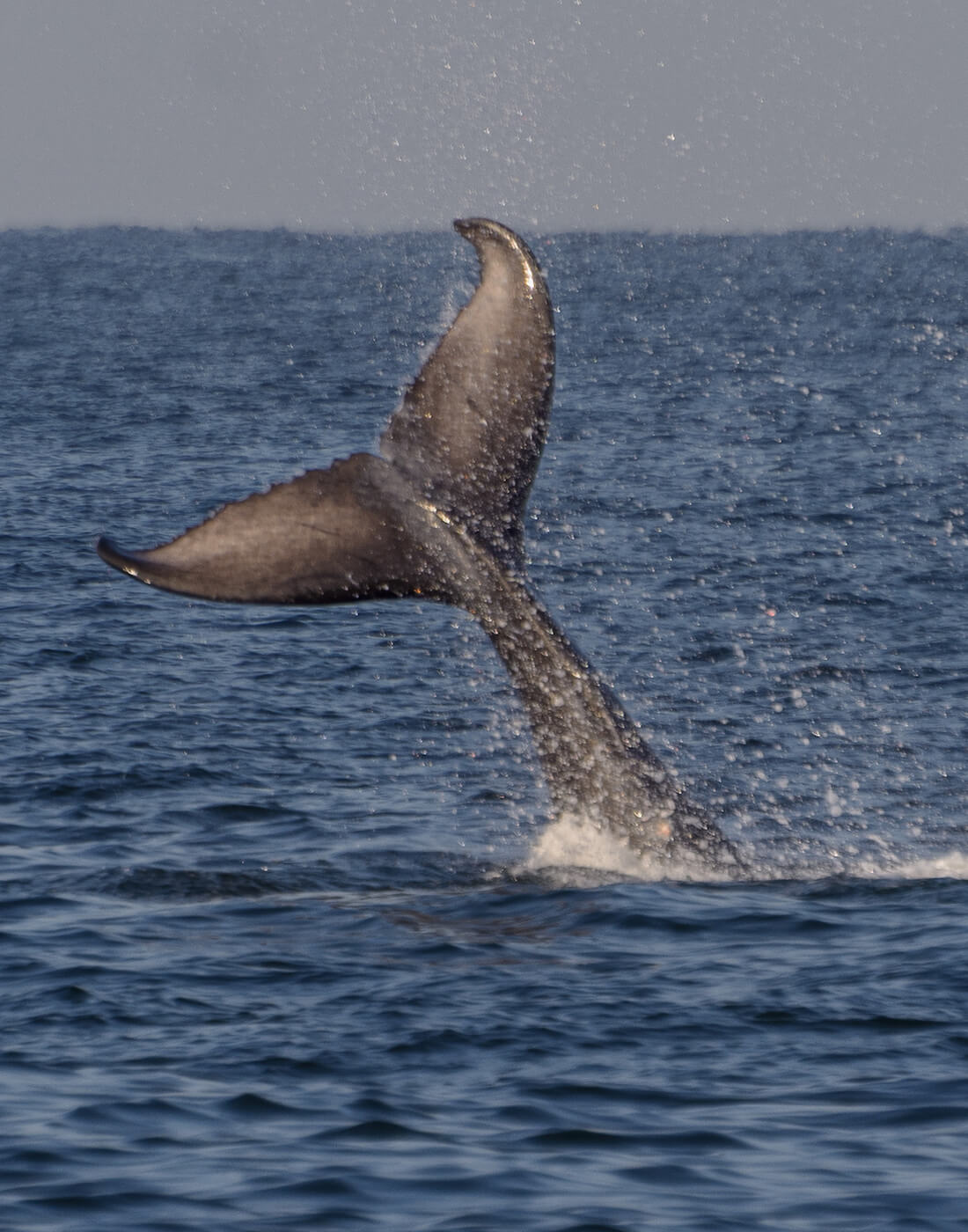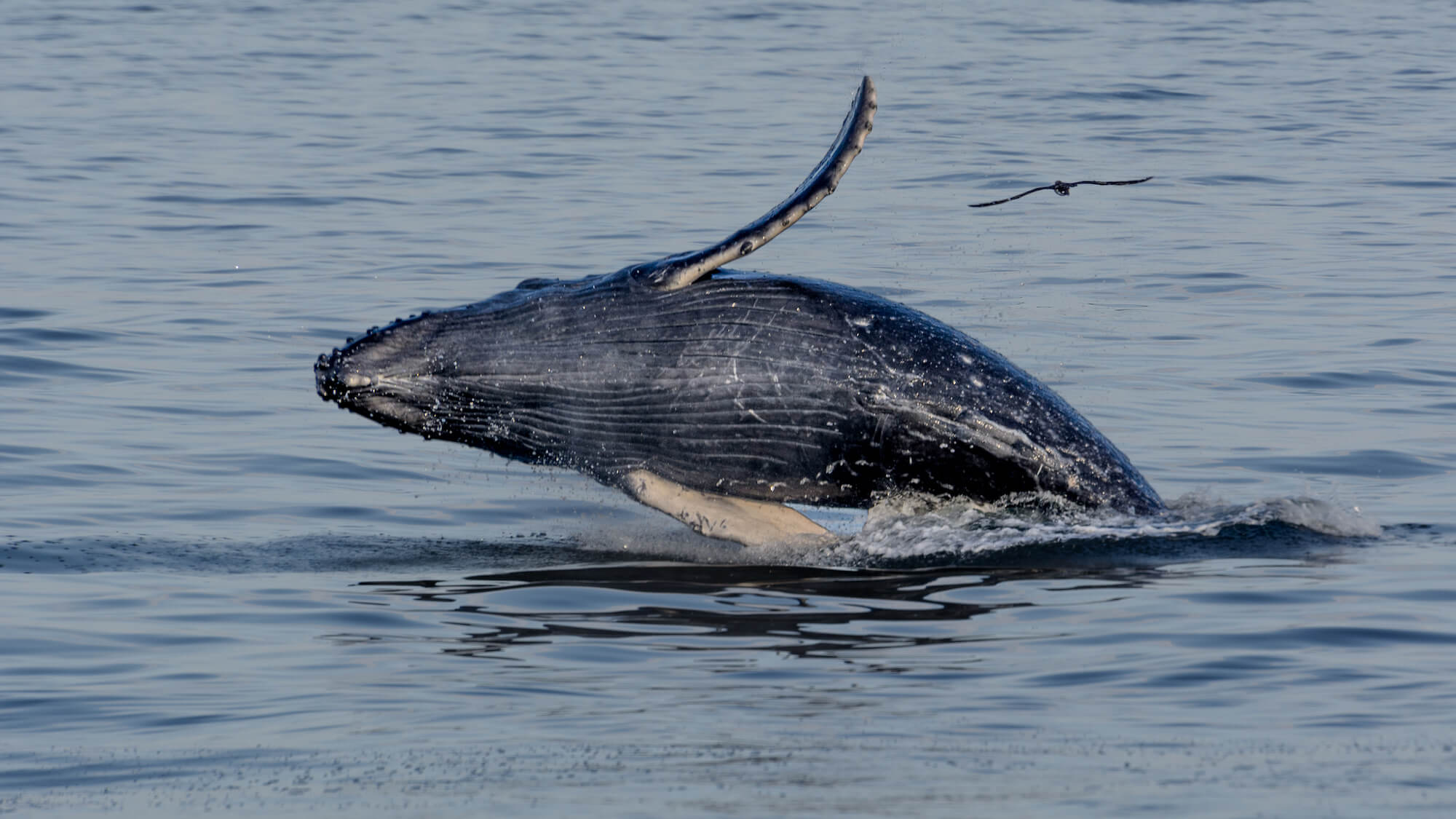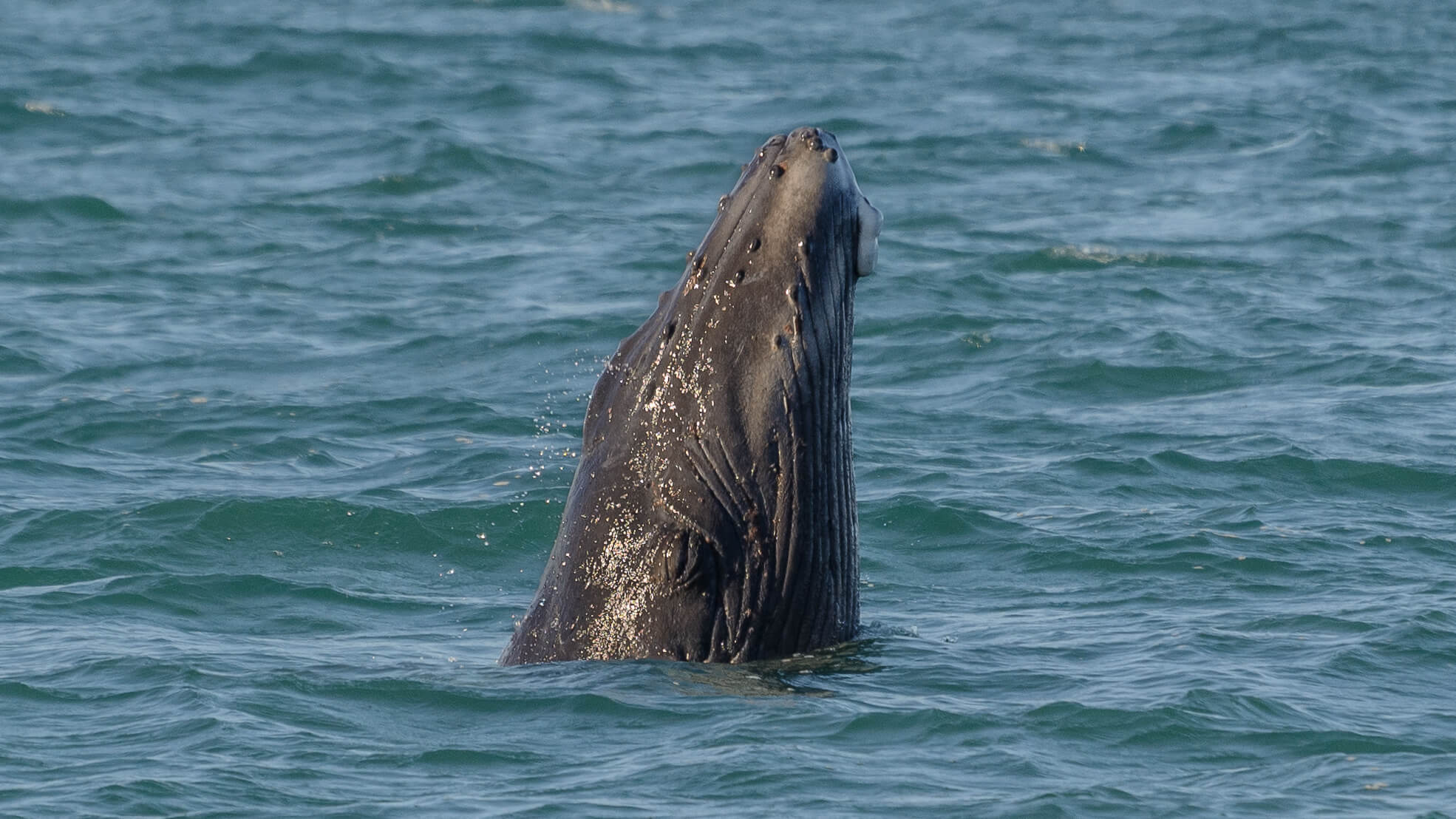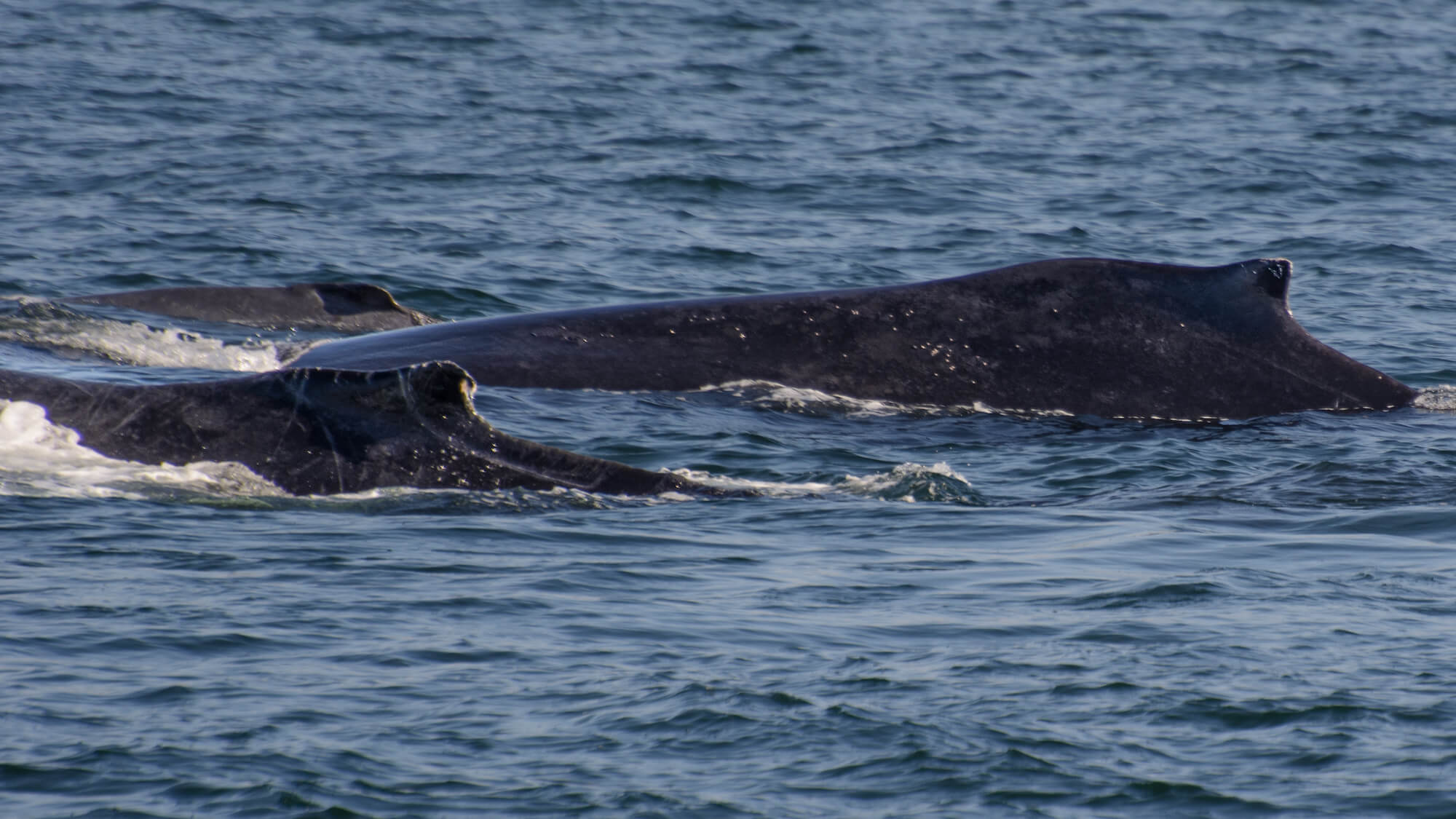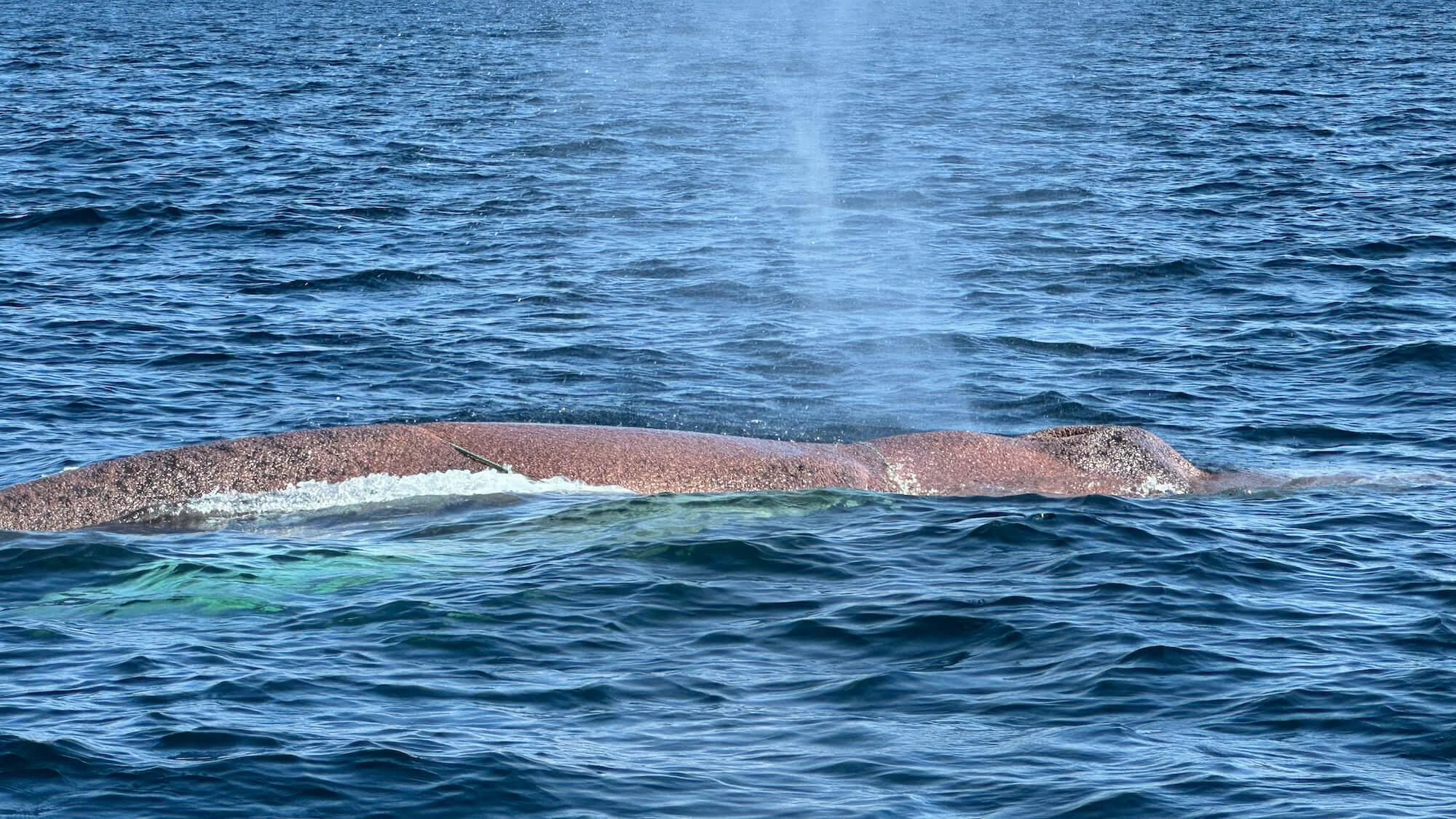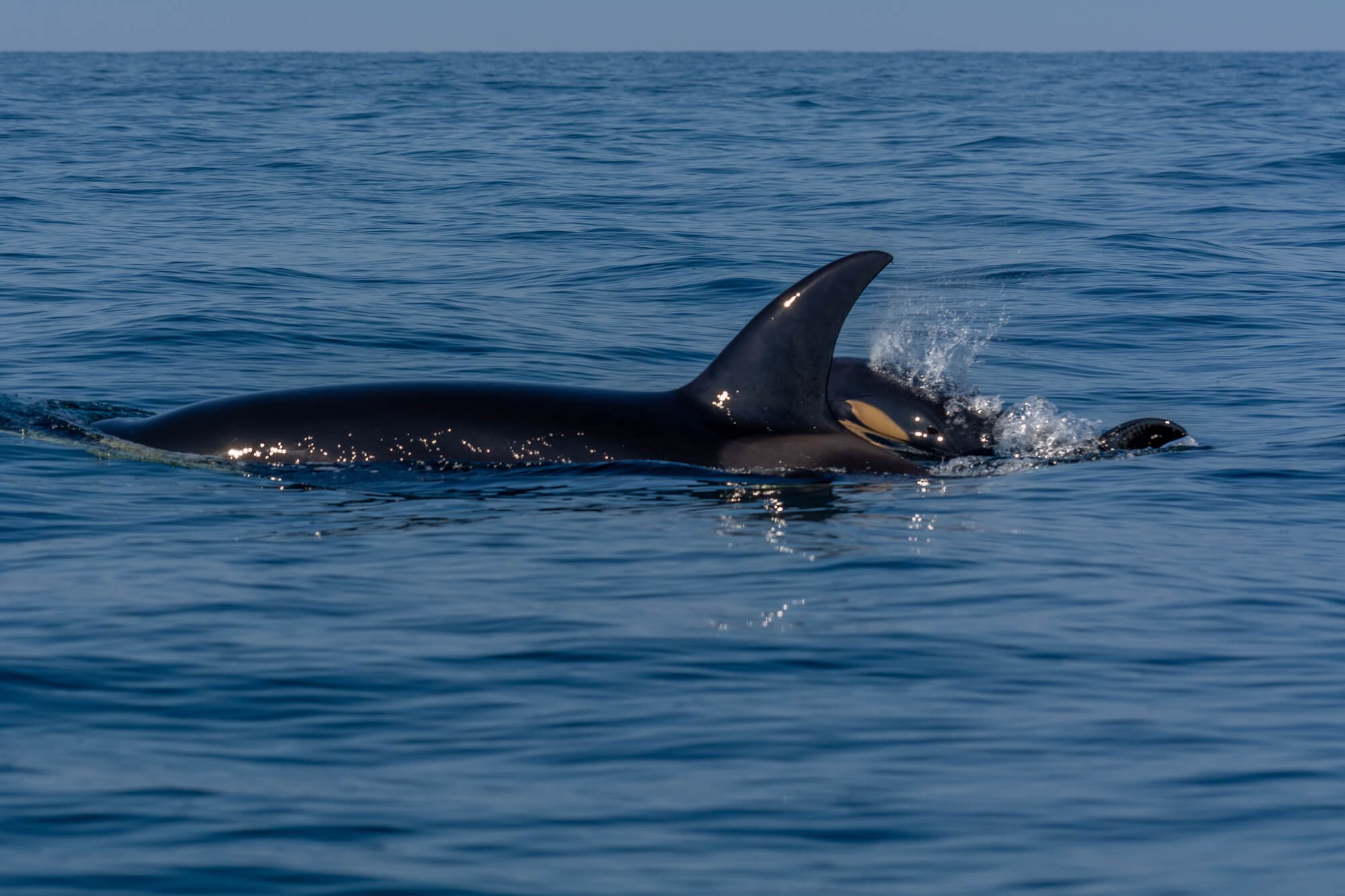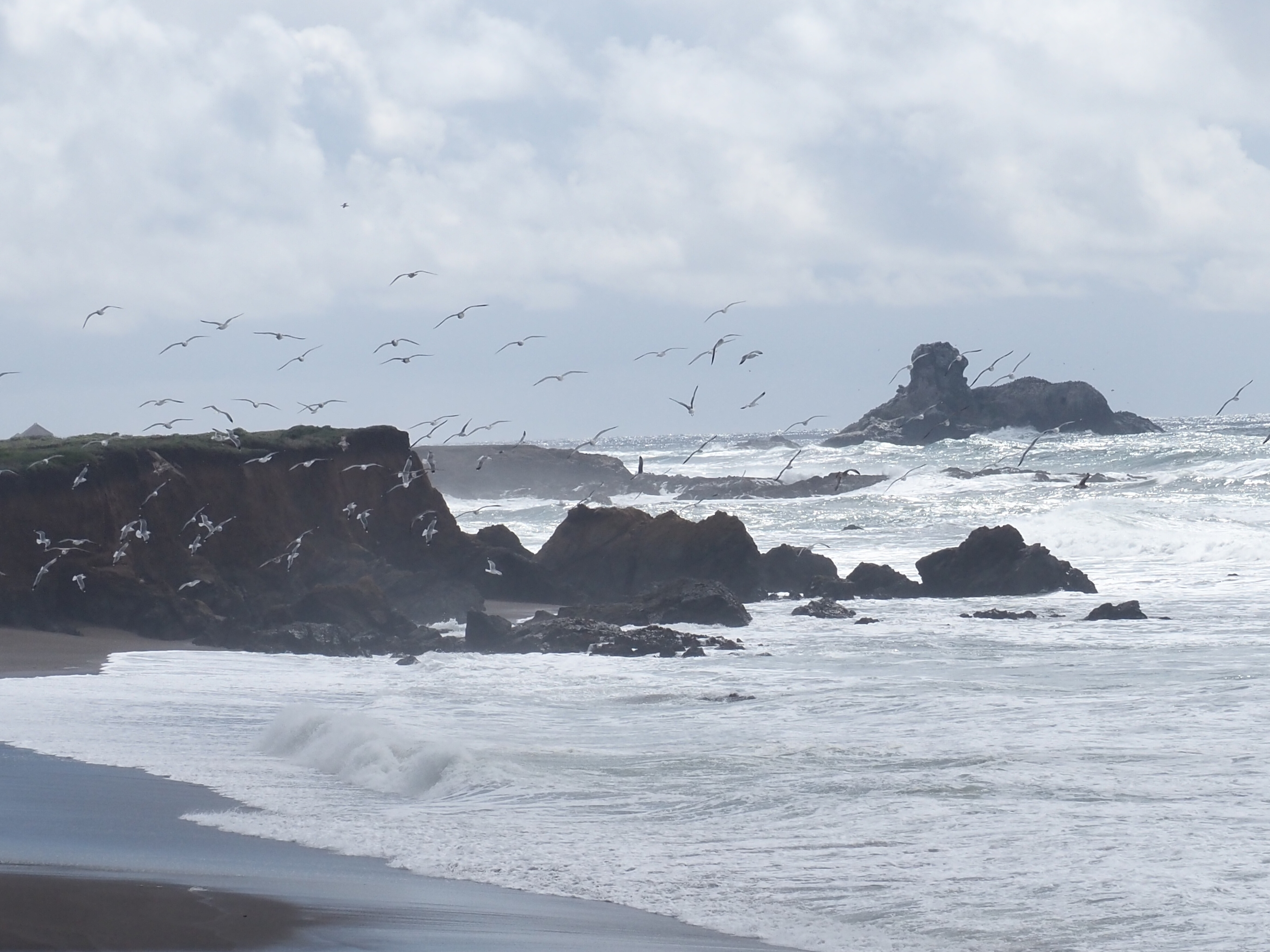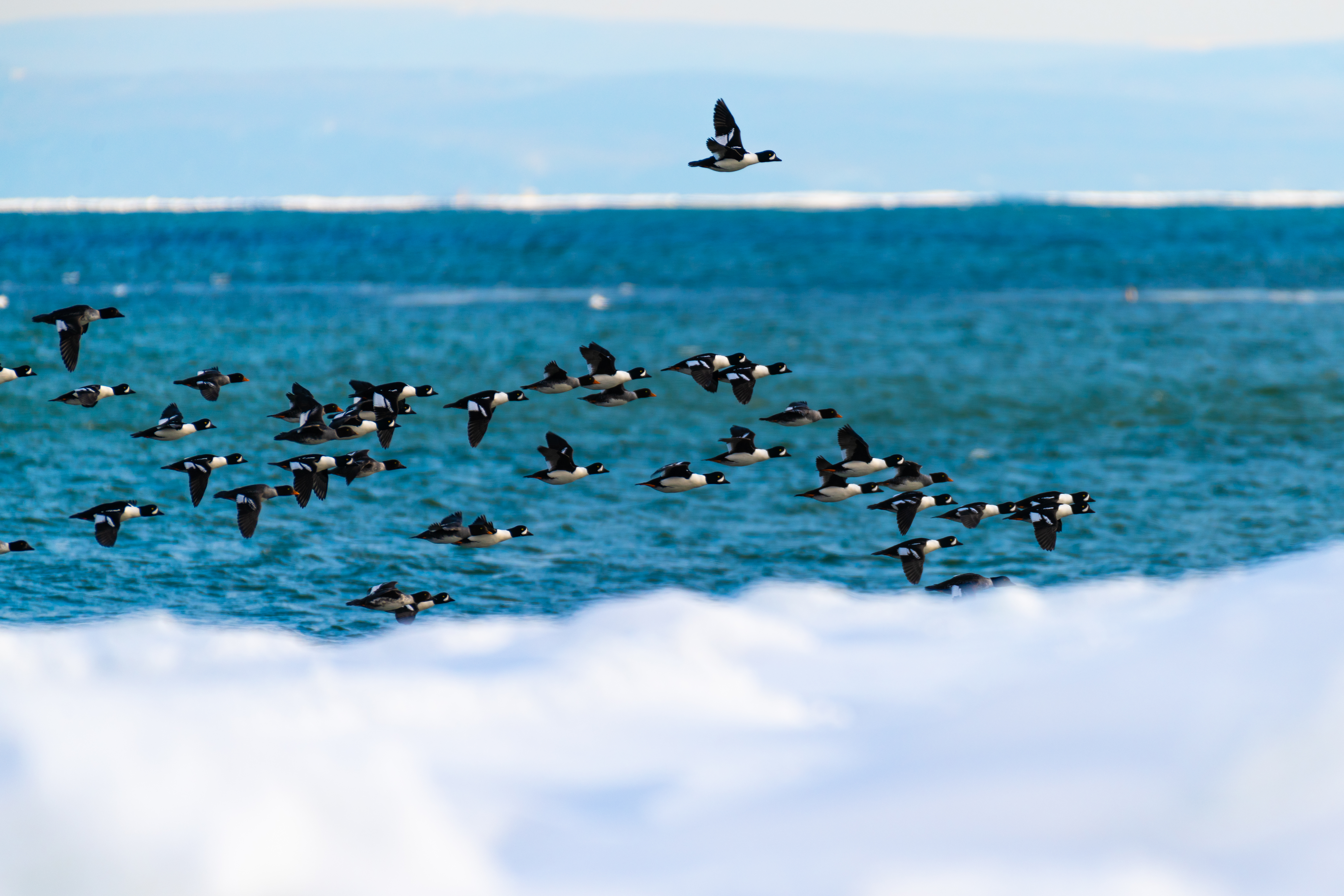Since 2019, I ‘ve been making an annual migration to Mexico for a few months each year, more precisely to Puerto Vallarta in the state of Jalisco. Banderas Bay is one of a number of nurseries and breeding grounds for humpback whales in the Pacific Ocean. I have the extraordinary privilege of volunteering for the research organization GRIMMA (El Grupo de Investigación de Mamíferos Marinos A.C.). GRIMMA is a non-profit association made up of professionals specializing in the study and conservation of marine mammals. The debuts of its research work go back over 20 years.
By Guylaine Marchand
One of the members of this association, Iyari Espinoza, is carrying out research here as part of her PhD thesis. The objective of her work is to assess whether whale-watching is having an impact on the behaviour of these mammals and their long-term survival. It was in the context of this research work that I was recruited as a volunteer.
My main tasks consist of administering questionnaires to passengers on board whale-watching excursions. These questionnaires aim to identify participants’ expectations prior to the excursion and evaluate their experience at the end of their trip. In parallel, I make sure that boats are compliant with regulations when they approach a site where whales are present, keep tally of any cetaceans encountered and, lastly, perform photo-identification work. I also had the opportunity to accompany a group of marine biologists on their transects. During whale-watching excursions and transects, I witness behaviour that I never get to see in Quebec!
Competition
In a most impressive ballet, bulls battle it out in an effort to win over a female. Swimming at full tilt, they jostle, ram into one another and slap their tails hard on the water surface to show off their might, offering an entertaining spectacle to observers. This show of force can last for hours or even days. In some bulls, numerous scars left by barnacle cuts (barnacles are small crustaceans that attach themselves to a whale’s skin) are testimony to past battles.
Birth
Females give birth in more temperate waters such as those off the coasts of Mexico. Calves are born with less blubber than adults and would likely be unable to survive in cold water. Thanks to the female’s rich milk, the calf doubles its weight in just a few months. This rapid weight gain will allow it to withstand the cold waters during its first northward migration.
Escort and education
I have been able to observe females with their calves on a multitude of occasions. The interactions between mothers and their young are very moving, not to mention educational. Newborn whales are often observed accompanied by two adults. In marine biology jargon, one of these adults is called the escort; male or female, the escort joins the mother-calf pair for a while to ensure the offspring’s survival. We identified males accompanying mother-calf pairs that just a few days earlier had been competing with one another. This observation suggests that males might benefit from this strategy with regard to reproduction. During this period, the calf learns to breach, slap the water with its pectoral or caudal fin, spyhop and dive. These playful activities allow it to build strength and, ultimately, contribute to its survival. Throughout this period, the female stays in constant proximity to her offspring and does not dive as deep as she normally might so as not to lose sight of her young.
Transects
During my most recent stint, we carried out several hours of transects in order to count and identify the different species of marine mammals, make sound recordings using a hydrophone and remove various sorts of debris floating on the surface. Among the various marine mammals that we sampled, we noted four different species belonging to the dolphin family: rough-toothed dolphin (Steno bredabensis), spotted dolphin (Stenella attenuata), bottlenose dolphin (Tursiops truncatus), and killer whale (Orcinus orca), not to mention the dwarf sperm whale (Kogia sima) and humpback whale (Megaptera novaeangliae).
Migration
Beginning in November, we noticed the presence of several humpback whales that had come to winter in the bay. Most of these animals arrive following a marathon migration from California, Alaska, or British Columbia. They come here to breed and give birth after a gestation period of about eleven months. For some, their long journey is not an easy one. Indeed, on December 5 at around 3:00 p.m., we discovered a whale that had gotten itself entangled. According to a crew member on board the research vessel, the buoy at the end of the rope came from the United States. In the her view, the whale must have been entangled for at least three months, as the animal’s entire body was covered in parasites. Swimming had become a constant struggle. GRIMMA is a member of the RABEN Whale Disentanglement Network, so we endeavoured to document the situation as best we could while waiting for the coordination team and the rescue team. Around 6 o’clock that evening, we received a message from the coordination team that the whale was now free of the rope, which measured 140 metres long. One of its pectoral fins, its tail and its body were ensnared. All of us were relieved to learn that this individual would be able to move about freely once again. It is sad to note that the dangers these marine mammals face on their migrations are often of human origin.
Much to our surprise, on December 12, we were able to observe a pod of killer whales numbering approximately 25 individuals. I won’t deny that I was very concerned for the remaining mammals present, as certain killer whale populations feed on fish while others prey on marine mammals. At this time, the killer whales were on the move and I was able to spot two calves within the herd.
Season’s end in Mexico
Transects will be carried out until the end of April. By then, most humpbacks will have left the bay. It will be high time for them to go fill their bellies after their long stay in the bay without feeding. My hope is that the waters they will frequent this summer will be abundant in food and that their epic journey will not be fraught with too many pitfalls. As for me, I will return to the waters of the St. Lawrence, though I’ll always have a special place in my heart for GRIMMA’s founder, Roberto Moncada Cooley, who has placed his trust in me all these years. Additionally, I wish the best of success to Iyari Espinoza in her endeavour to improve the prospects for the survival and well-being of all these endearing marine mammals. The results of her research may help demonstrate that regulations aiming to protect marine mammals in Banderas Bay need to be reinforced.


